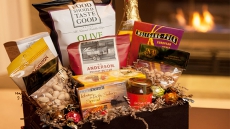A look at the various delicacies prepared in different parts of India during the festival.
Vaisakhi is a festival celebrated by Punjabis all over the world. It coincides with other festivals celebrated on the first day of Vaisakh in some regions of India. Vaisakhi is especially important for the Sikh community as it marks the establishment of the Khalsa.
The festival is also celebrated by Hindus and Buddhists for different reasons, including the start of a new year. Vaisakhi is a harvest festival for Punjabis and, according to the Punjabi calendar, it is their New Year. This day is also observed as the Thanksgiving Day by farmers whereby the farmers pay their
tribute, thanking God for the abundant harvest and also praying for future prosperity.
On the day, Sikhs and Punjabis usually visit the Gurudwara and offer prayers for a good harvest year after year. The air is filled with festivity and every kitchen in the northern states of India, especially Punjab, is taken over by the aroma of authentic Punjabi recipes.
I remember my younger days when we would wake up early morning and the entire family would dress up and go to the Gurudwara. A special langar would be prepared for that day and we would all celebrate together.
During my childhood days when I would go to my grandmother’s house in Punjab, I remember the farmers celebrating in the fields with bhangra and dhols, and delicious food being cooked at my granny’s house. Right from the starter to the dessert, each Punjabi recipe is unique and has its own taste, preparation and aroma. Choley Bhature, Makki Ki Roti and Sarson Da Saag, and Kheer are some of the popular recipes that people love to cook during the festival of Baisakhi.
Apart from being unique, they are easy to prepare. Many variations can be brought about to the same recipe. The traditional Punjabi recipes are characterized by spicy taste, strong aroma, and the generous use of ghee. My mom used to prepare all these lovely mouth-watering delicacies and we used to cherish them.
In Kerala, among the Hindus, it is celebrated as Vishukkani. Vishu of Kerala is considered as a festival of light and fireworks, and decorating lights and bursting of firecrackers (Vishupadakkam) is part of the celebration. People also observe Vishukkani: “the first thing seen on the day of Vishu after waking up.” The Vishukkani consists of rice, fruits and vegetables. Feast items include Veppampoo Rasam (neem flower rasam), Mambazha Pulissery (mango cooked in yogurt curry), Vishu Kanji (rice and coconut porridge), and Vishu Katta (rice pudding in coconut milk).
Maha Vishuva Sankranti marks the Oriya New Year in Odisha. Celebrations include various types of folk and classical dances, such as the Shiva-related Chhau dance. A small pot filled with pana, a sweet drink of crystal sugar and water, is hung over a tulsi plant. A hole at the bottom of the pot allows the liquid to fall from the pot, representing rain. Chhatua, a flour made from lentils and grains, is eaten along with curd, after offering it to the tulsi.

The Bengali New Year is celebrated as Pahela Baishakh (or Pohela Boishakh, Noboborsho) on April 14 every year, and a festive Mangal Shobhajatra is organized in West Bengal, Tripura, and Bangladesh. Fairs are organized to celebrate the event, which provide entertainment including the presentation of folk songs. Delicacies that are prepared during Pohela Baishhak are Panta Ilish, one of the traditional dishes made with leftover rice soaked in water with fried Hilsa fish and shukti (dried) fish. Another dish is Ilish Bhaja, which is basically a fried Hilsa fish.
Sweets like Indrani, Ras Malai, Patishapta, and Rosogolla are some of the popular desserts served for Pohela Boishakh.
Have a great Vaisakhi and celebrate this festival with good food!










